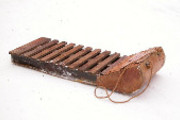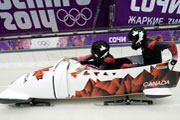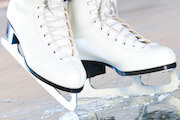Does sliding down an icy track at 80 miles per hour on a sled with no brakes sound like fun? Welcome to the world of luge.
Luge - History
People have been sliding down hills on sleds for over 1,000 years. In many places, where there's lots of snow, travelling on a sled was the only way of getting around. In the 19th century, loggers working in the Swiss Alps would sometimes race each other home by travelling down icy logging roads on sleds or toboggans. The first official luge competition was held in Switzerland in 1883 and the sport became an Olympic event for the first time at the 1964 Winter Olympics.
Luge - Need For Speed, Dangerous Curves
The sport of luge is named after the french word for "sled." To start a race, luge racers sit on their sleds, then hit the ice with spiked gloves to get acceleration down the slide. Riders steer the sleds by pushing on the runners and using shoulder pressure and extremely precise body movements. The craziest thing about racing on a luge track is that there are NO BRAKES on the luge sled! Athletes stop by holding the front of the sled up, which pushes the backs of the steels into the ice. Because aerodynamics are critical, most athletes don't wear any padding or protection in their rubber luge suit - so most wipeouts are extremely painful. The average length of a luge run is 40 to 60 seconds with most tracks having between 14 and 20 curves.
Luge - How Can I Try Luge
Do you have a need for speed? Does the idea of sliding 80 miles per hour down an icy track sound like a blast to you? If it does, then you may be perfect for the sport of luge. There are only a few luge tracks in the United States but USA Luge does have a very active recruitment program that is looking for young athletes aged 11 to 14 to train with the Junior Development Team. The USA Slider Search travels to dozens of cities across the USA and trains thousands of kids the basics of luge. For more information on the USA Luge Slider Search, head to the official site, www.usaluge.org.
Luge - Fun Facts
- Some luge athletes experience G-forcesm in some curves on a luge track comparable to that of jet fighter pilots!
- The seat on a luge sled is called a sling.
- Luge racers wear weight vests, with pieces of lead sewn into them, to make themselves heavier on the sled. This gives the lugers more speed.
- The sport of street luge started after skateboarders got the idea of racing their boards down steep hills.
- In the two-man luge event, there is a top man and a bottom man. The top man is the taller of the two athletes and sits on top of his luge partner. The bigger man goes on top for greater speed and aerodynamics.
Related Stories:

































